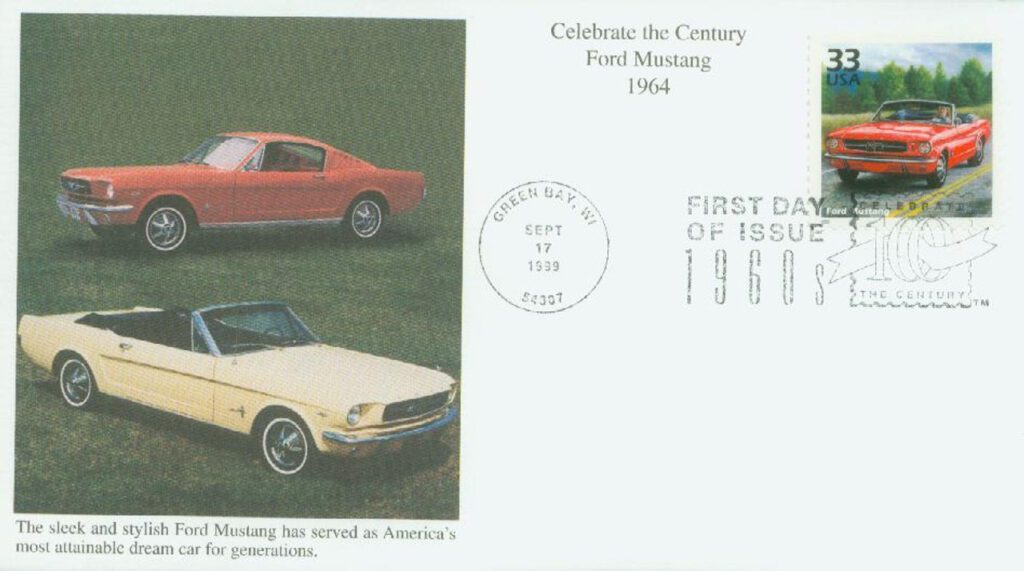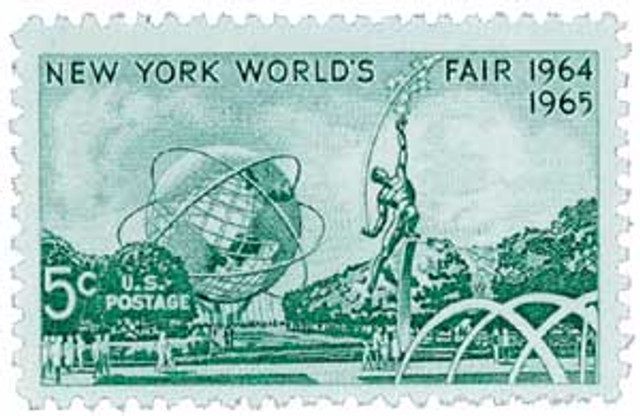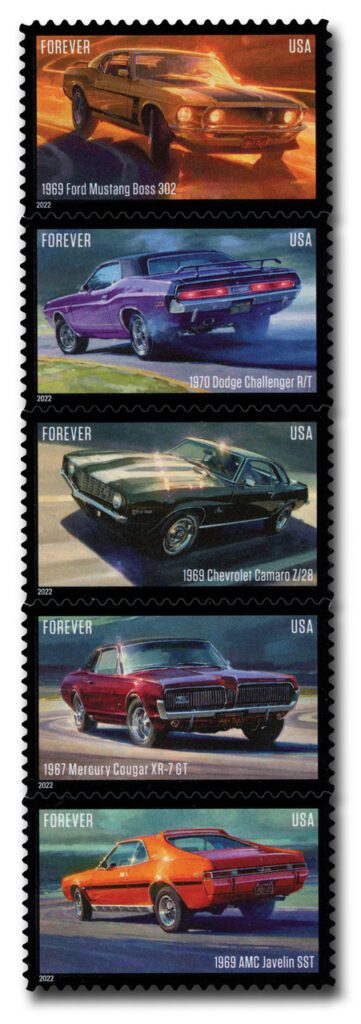On April 17, 1964, the Ford Mustang debuted at the New York Auto Show, and was available for sale around the country that same day.
In the 1960s, pony cars ruled America’s roads and racetracks. As younger drivers were looking for fast, affordable, sporty cars, auto manufacturers competed for their business and attention, sparking the fierce pony car wars.
Ford began developing the Mustang in 1961. A prototype appeared at the US Grand Prix in 1962. Two people claim credit for the Mustang name. John Najjar, co-designer of the Mustang proto-type, reportedly named the car after the P-51 Mustang fighter plane. Ford market research manager Robert J. Eggert claims to have suggested the name after receiving a book about horses titled, The Mustangs.
The Plymouth Barracuda was the first pony car available for sale (two weeks before the Ford Mustang), but it didn’t sell well. Released on April 17, 1964, the Ford Mustang was an instant hit, selling about 22,000 on its first day.
Ford estimated first-year sales of the car would be 100,000. That number was reached in just four months. In 1965, over 680,000 Mustangs were produced, setting a record for first-year sales. They sold over one million Mustangs within two years. The Mustang shattered sales records and it wasn’t long before their competitors joined in the race.
The first Mustangs manufactured are considered 1964 1/2 models. They were available only as a convertible or a coupe, and sold for around $2,300. In 1965, the “GT” and “fastback” models were produced. Options available on the 1965 Mustang were a 271-horsepower engine, 3-speed “Cruise-O-Matic” transmission, remote- control outside mirror, and red band sidewall tires. Ford updated the Mustang every year. In 1966, the interior of the car could be designed in 34 different styles and colors. Consumers were able to create “the car of their dreams” from a Ford dealer’s order book.
Ford also dominated racetracks in the early days of the Pony Car craze. Manufacturers pitted their cars against one another in a variety of races, most notably the Trans-Am Series. Pushing the idea of “Win on Sunday, Sell on Monday,” these races helped increase sales across the country. Before long, enthusiastic drivers were staging their own street races, testing out the pony cars’ abilities for themselves. The term pony car was coined by Car Life magazine, which described the cars as sporty, compact, and for the masses, with a long hood, short deck, and affordable price. Pony cars were also highly customizable. With a wide range of available features, paint colors, and trim stylings, these cars could be as unique as their drivers.
When Chevrolet took the top spot in 1968, Ford refused to be outdone and developed its legendary Mustang Boss 302. Ford brought in a new president, former GM vice president Semon “Bunkie” Knudsen. Knudsen quickly hired famed Corvette C2 designer Larry Shinoda to develop the new Mustang. The project was a secret, so when asked what he was working on, Shinoda simply replied “the boss’s car,” leading to the Mustang’s name. The “302” in the name is a reference to the 302-cubic inch engine.
In addition to upgrades under the hood, the 302 had larger front wheel wells for bigger tires, front and rear spoilers for better aerodynamics, and black matte paint on the center of the hood to reduce glare. The 302 also had black decals that stood out against the Bright Yellow, Calypso Coral, Wimbledon White, and Acapulco Blue paint jobs.
After losing the 1969 race to Chevy, the Boss underwent slight modifications and claimed victory in 1970. Canadian racer Allan Moffat drove a Boss 302 to 101 victories out of 151 races in Australia between 1969 and 1971.
The era of the classic Mustang came to an end in 1973. It was replaced by a smaller, lighter car with many cosmetic changes. After 35 years of continuous production, today the Ford Mustang is one of the most successful and long-lived of collectible automobiles.
| FREE printable This Day in History album pages Download a PDF of today’s article. Get a binder or other supplies to create your This Day in History album. |
Discover what else happened on This Day in History.







Great car. Bought my first one used a 1965 fastback in 1970. Drove it till the wheels literally feel off. Great little car.
Mustang Sally
I remember the Mustang from my days in El Paso with the USAF. I had a 1964 Corvette Fuelie and I’d pull up to a light on Dyer and inevitably there would be a guy in a Mustang beside and he’d start revving his engine because he wanted to show me how great his crappy little Mustang was. Light changes, I hit the accelerator and within a quarter mile I can see his headlight pretty far back. His little 283 was no match form my 327/375 HP Vette. To me a Mustang was a chick car.